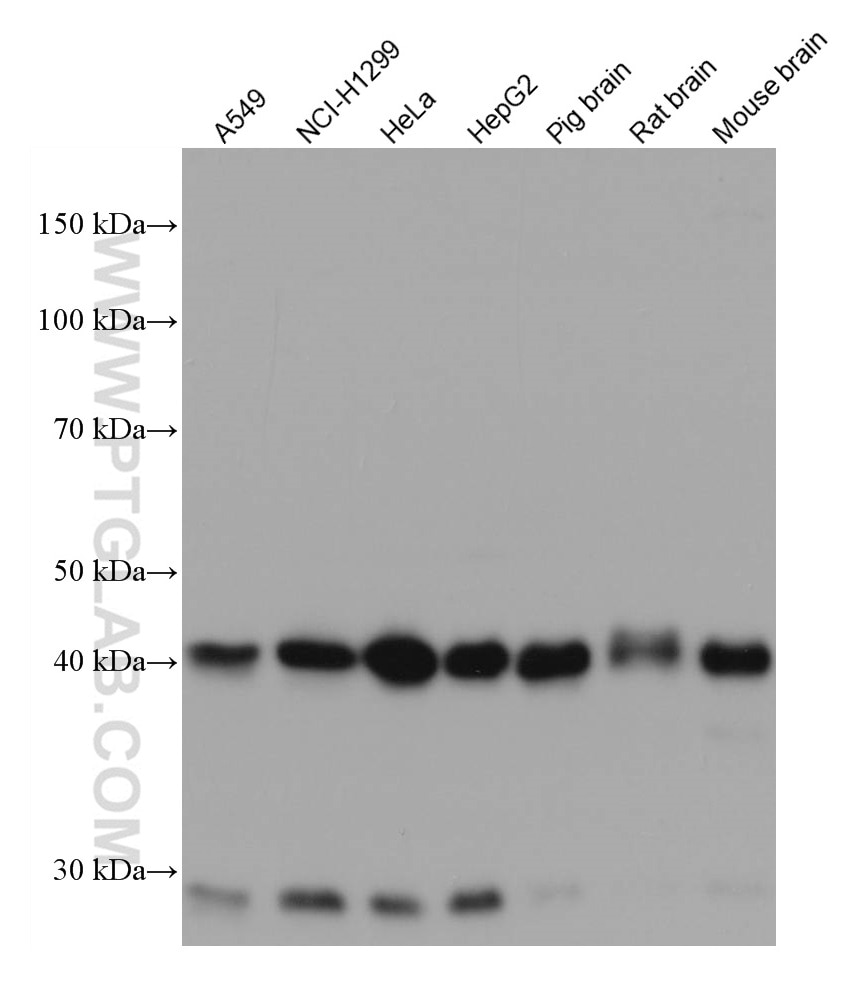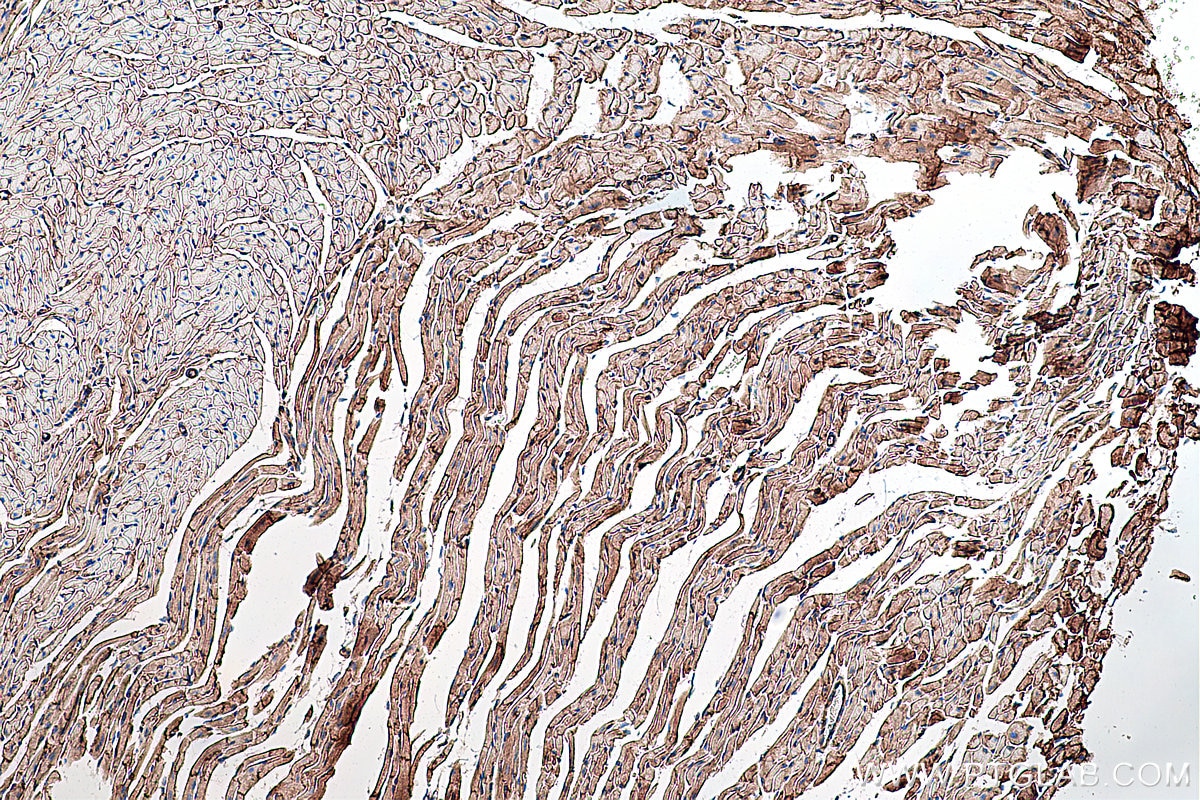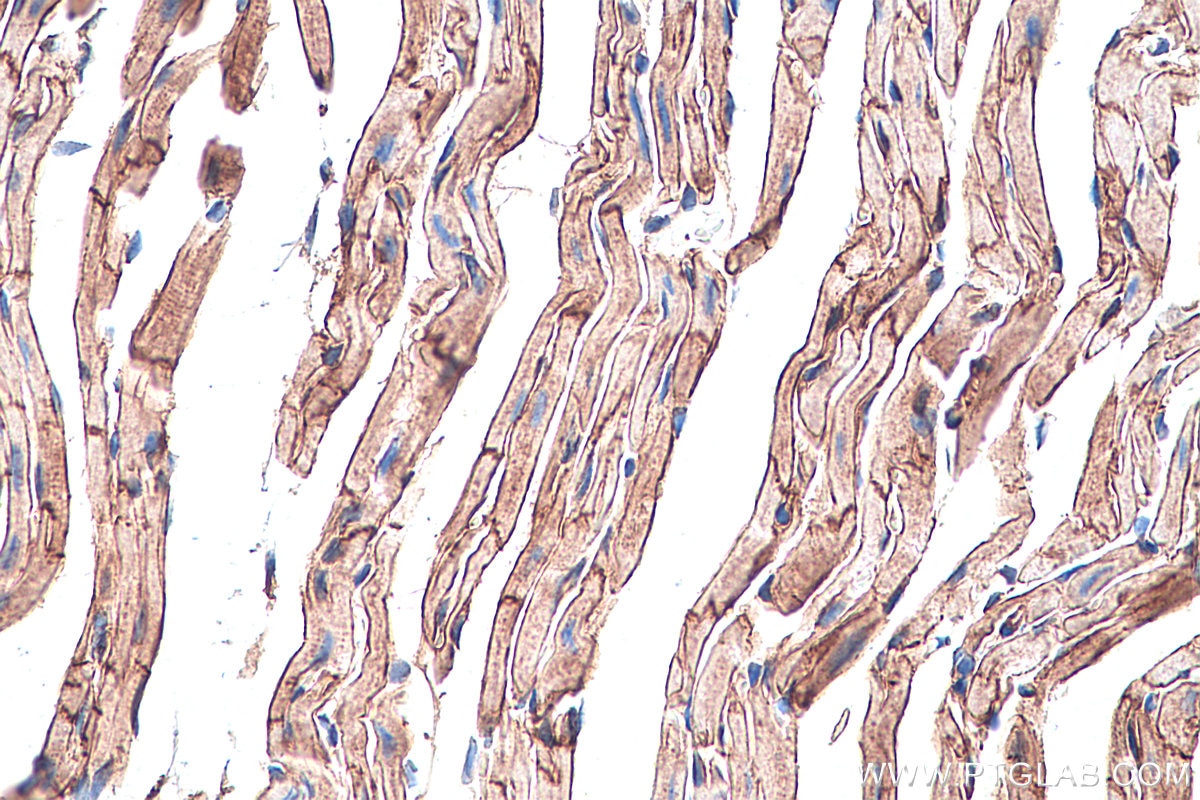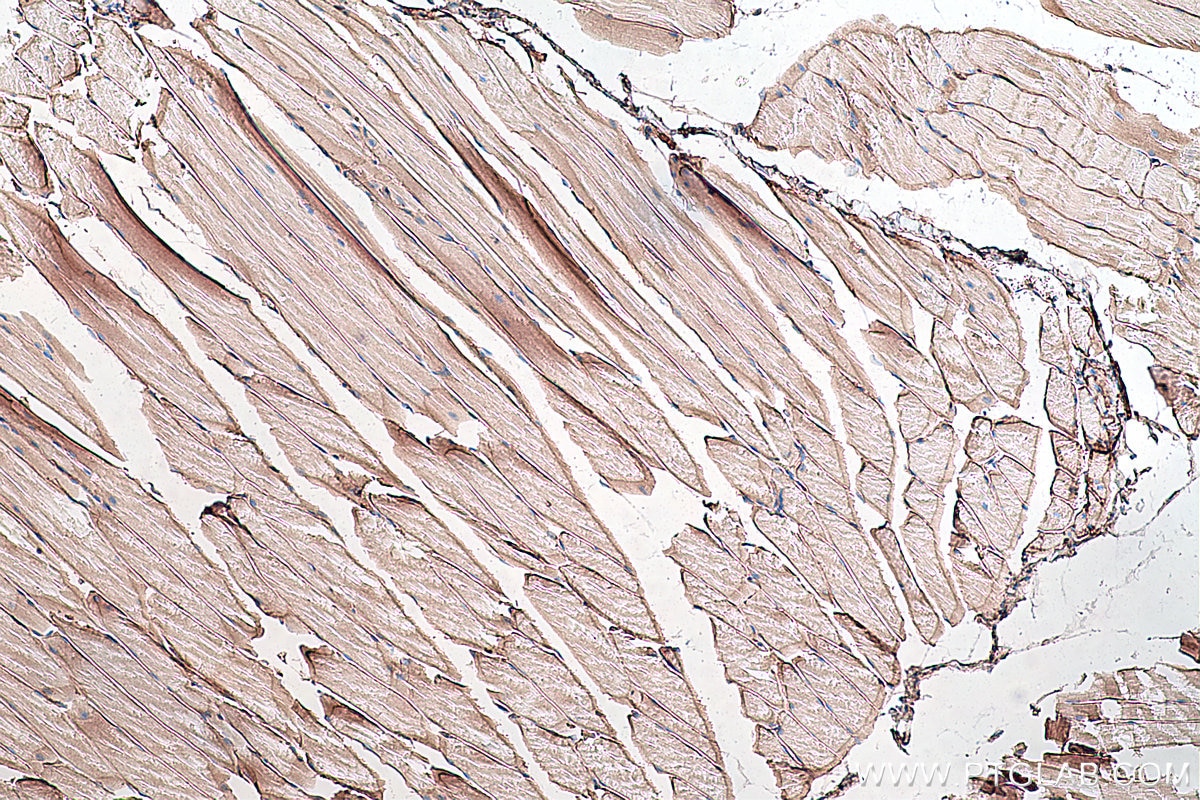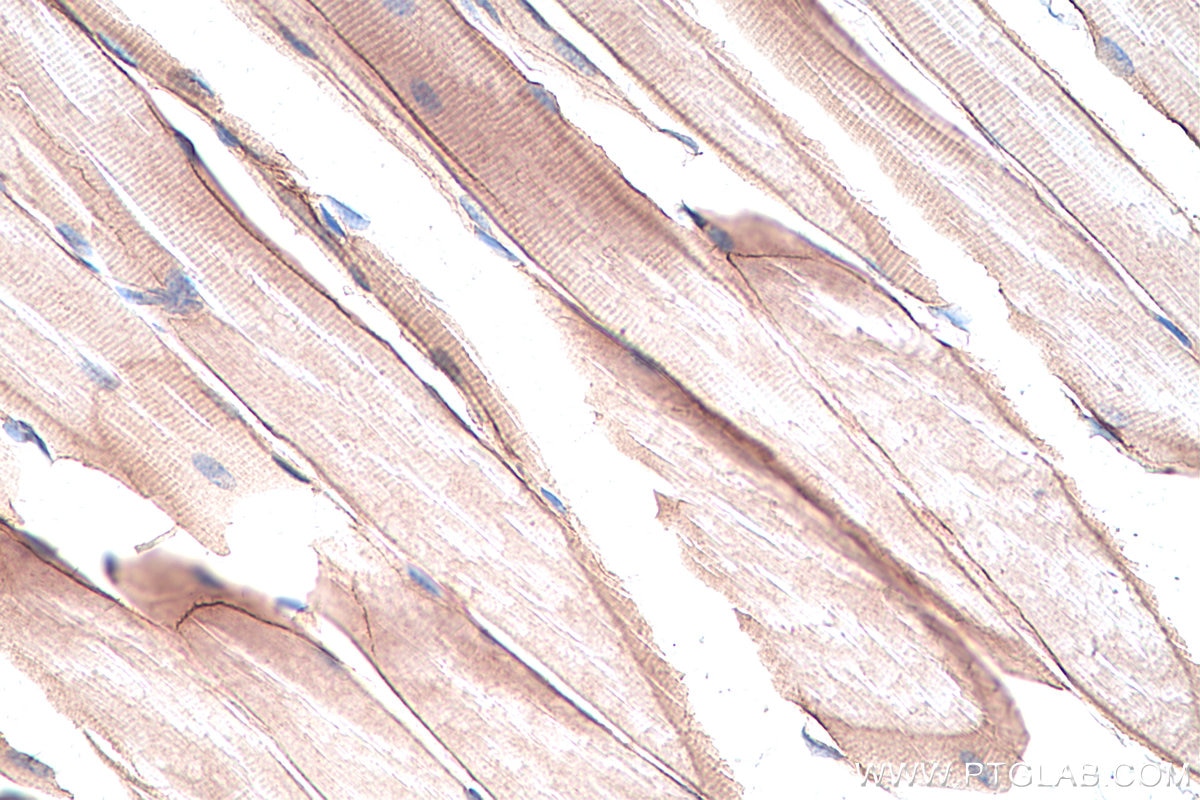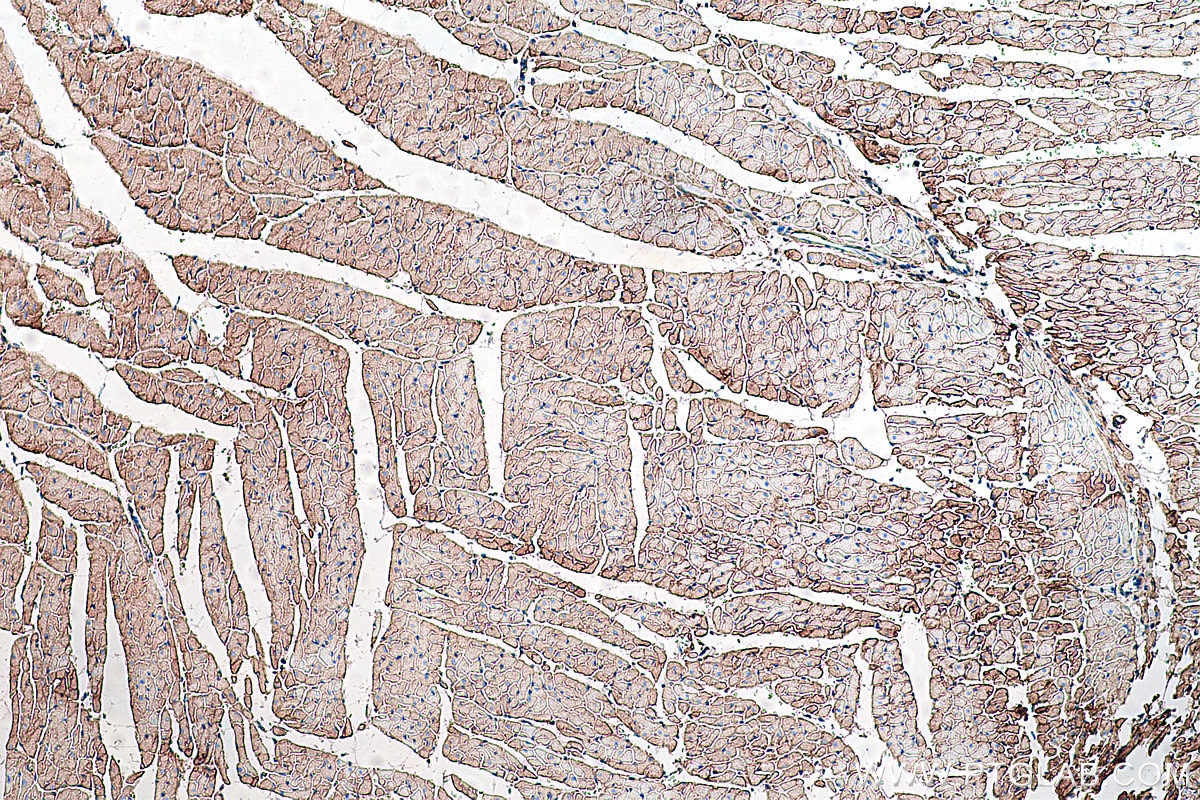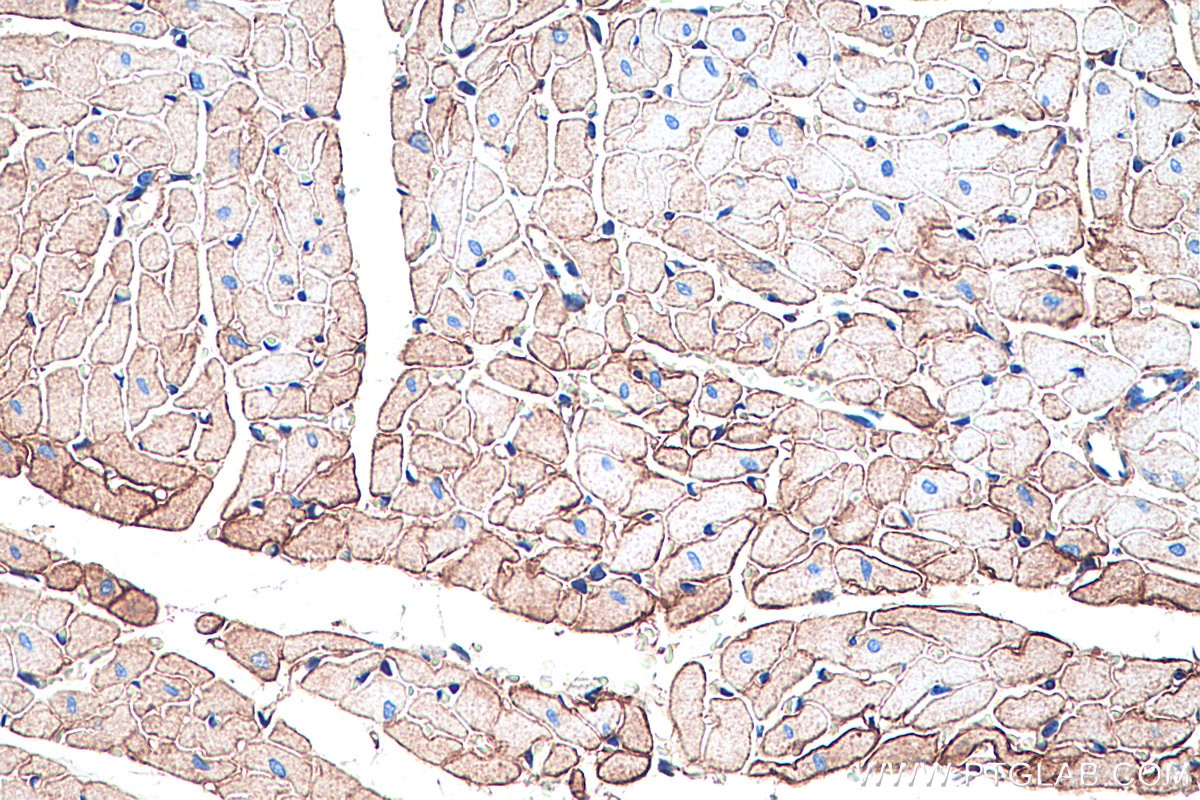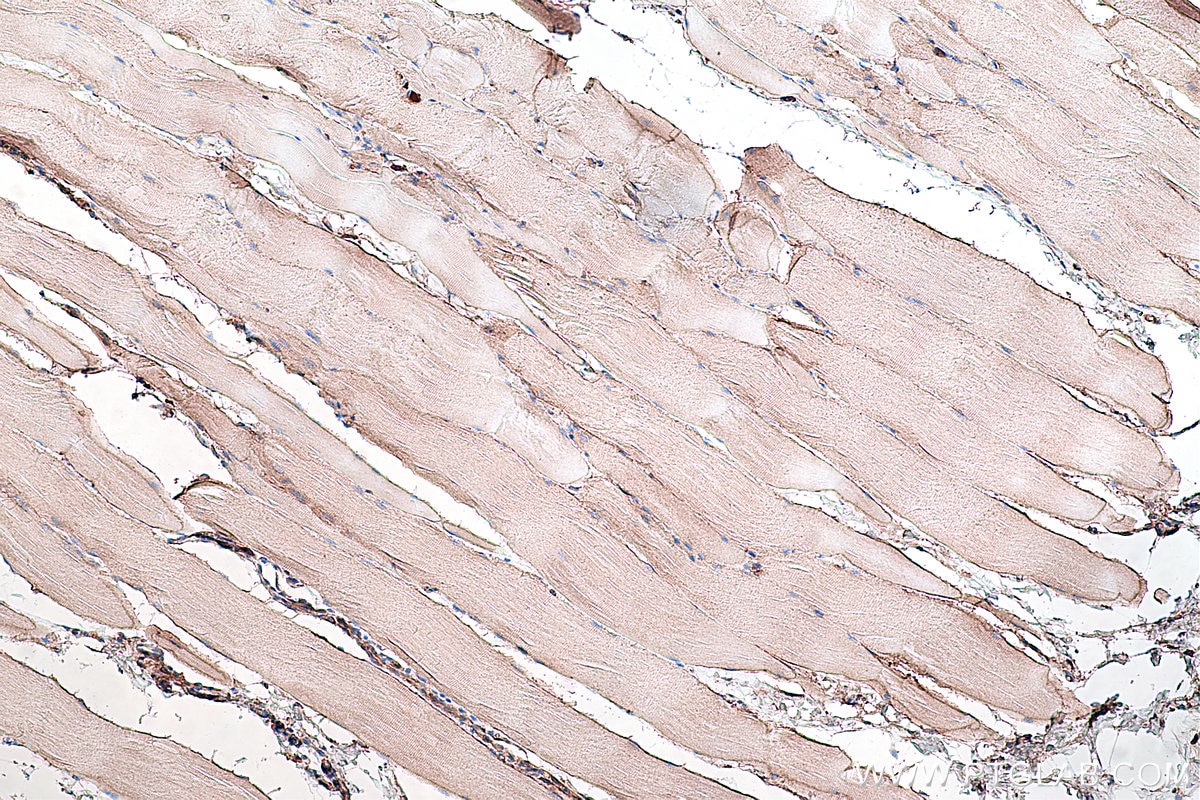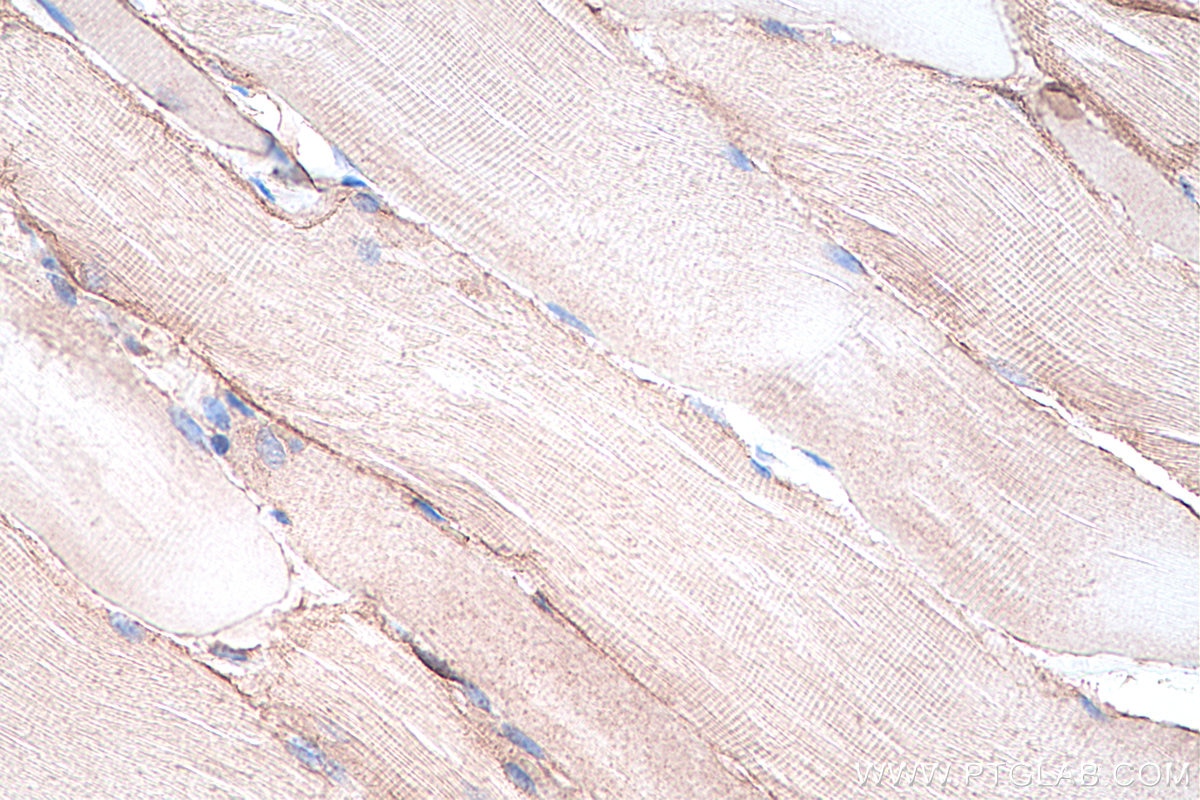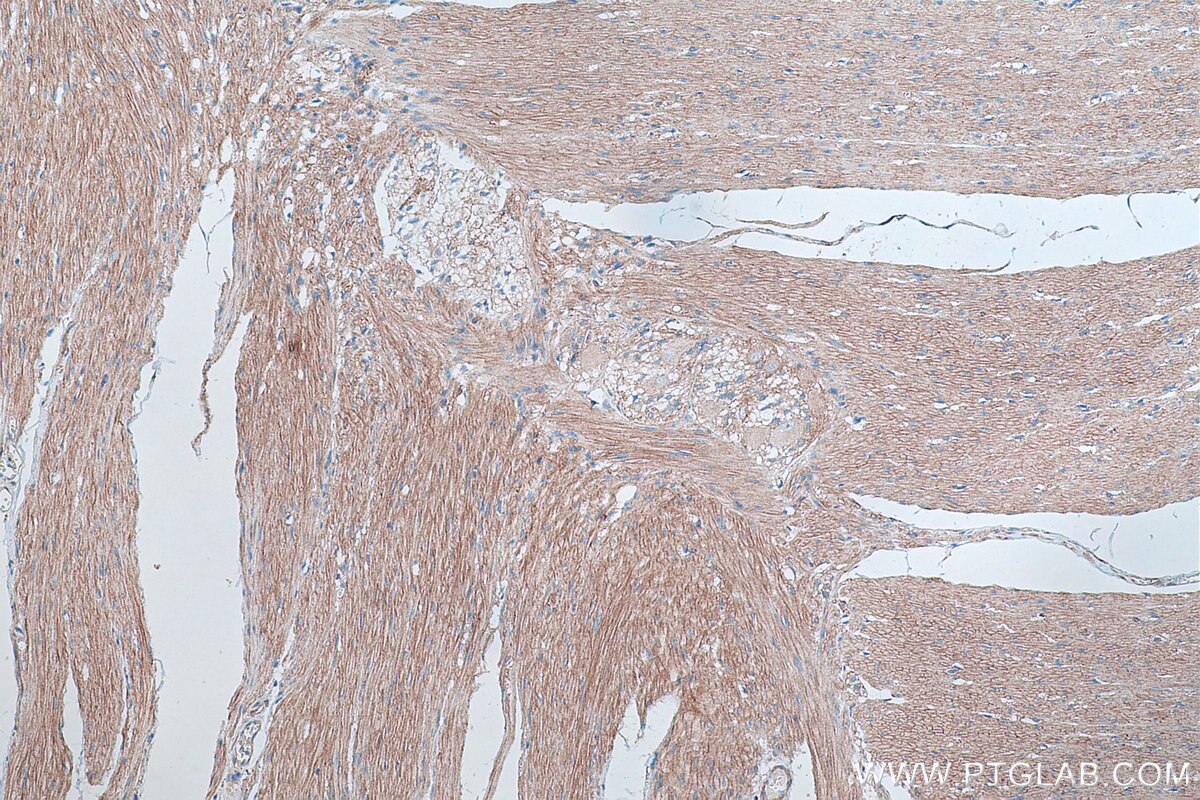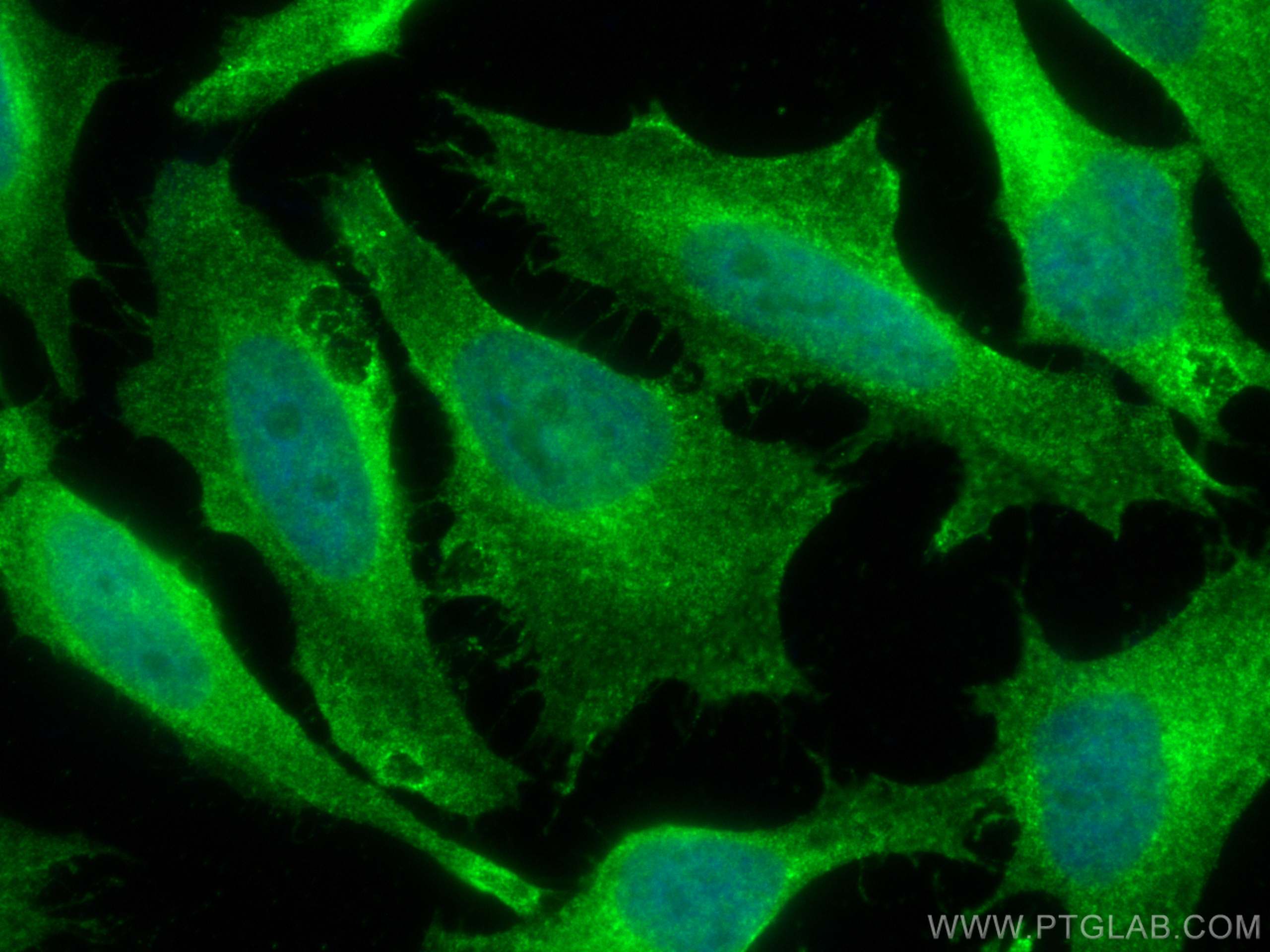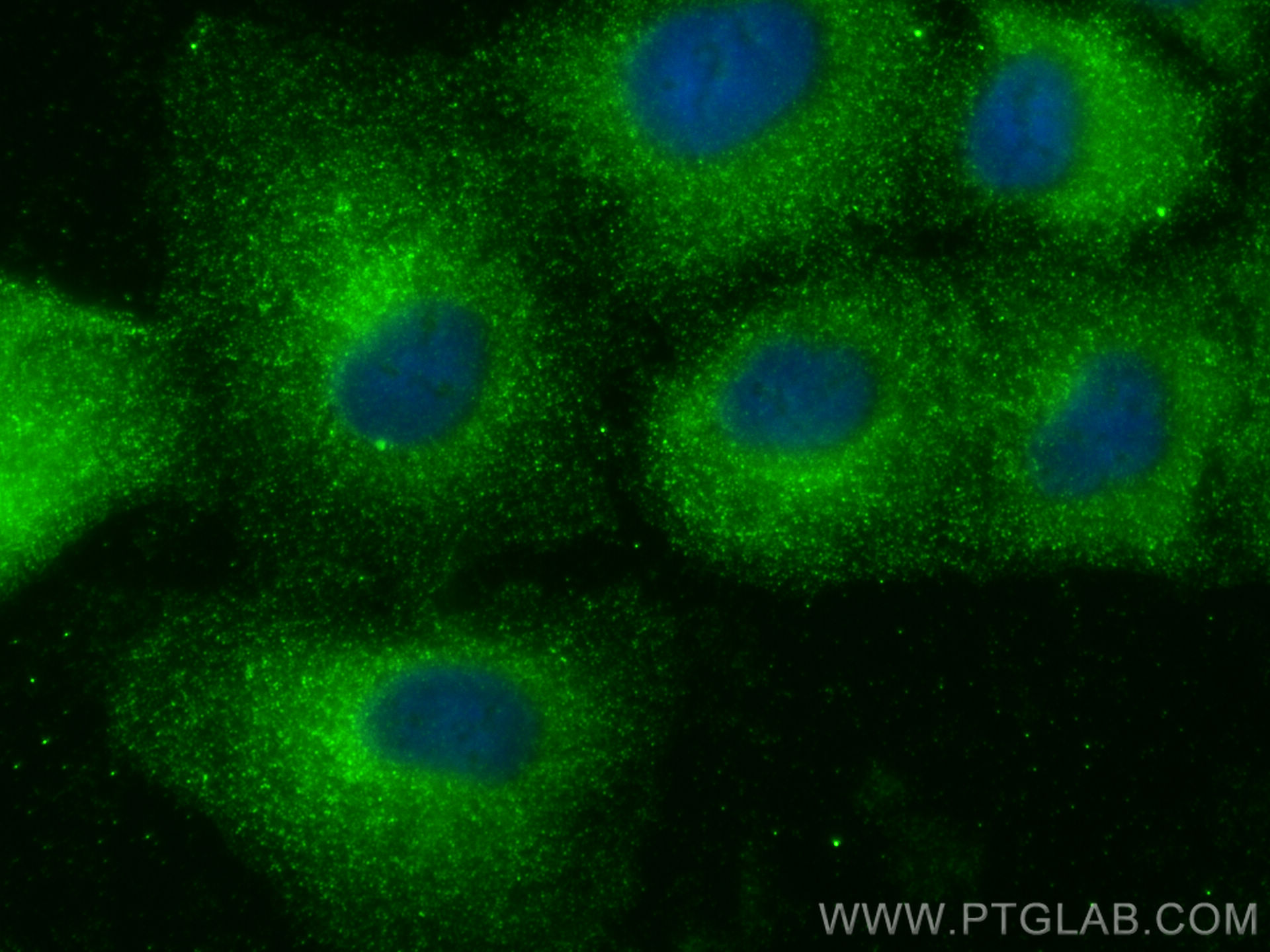- Phare
- Validé par KD/KO
Anticorps Monoclonal anti-Dystroglycan
Dystroglycan Monoclonal Antibody for WB, IHC, IF/ICC, ELISA
Hôte / Isotype
Mouse / IgG1
Réactivité testée
Humain, porc, rat, souris
Applications
WB, IHC, IF/ICC, ELISA
Conjugaison
Non conjugué
CloneNo.
2B1G12
N° de cat : 66735-1-Ig
Synonymes
Galerie de données de validation
Applications testées
| Résultats positifs en WB | cellules A549, cellules HeLa, cellules HepG2, cellules NCI-H1299, cerveau de souris, tissu cérébral de porc, tissu cérébral de rat |
| Résultats positifs en IHC | tissu cardiaque de souris, tissu cardiaque de rat, tissu de côlon humain, tissu de muscle squelettique de rat, tissu de muscle squelettique de souris il est suggéré de démasquer l'antigène avec un tampon de TE buffer pH 9.0; (*) À défaut, 'le démasquage de l'antigène peut être 'effectué avec un tampon citrate pH 6,0. |
| Résultats positifs en IF/ICC | cellules HeLa, cellules A549 |
Dilution recommandée
| Application | Dilution |
|---|---|
| Western Blot (WB) | WB : 1:5000-1:50000 |
| Immunohistochimie (IHC) | IHC : 1:2000-1:8000 |
| Immunofluorescence (IF)/ICC | IF/ICC : 1:400-1:1600 |
| It is recommended that this reagent should be titrated in each testing system to obtain optimal results. | |
| Sample-dependent, check data in validation data gallery | |
Applications publiées
| WB | See 1 publications below |
Informations sur le produit
66735-1-Ig cible Dystroglycan dans les applications de WB, IHC, IF/ICC, ELISA et montre une réactivité avec des échantillons Humain, porc, rat, souris
| Réactivité | Humain, porc, rat, souris |
| Réactivité citée | Humain, souris |
| Hôte / Isotype | Mouse / IgG1 |
| Clonalité | Monoclonal |
| Type | Anticorps |
| Immunogène | Dystroglycan Protéine recombinante Ag27222 |
| Nom complet | dystroglycan 1 (dystrophin-associated glycoprotein 1) |
| Masse moléculaire calculée | 97 kDa |
| Poids moléculaire observé | 43 kDa, 30 kDa |
| Numéro d’acquisition GenBank | BC012740 |
| Symbole du gène | Dystroglycan |
| Identification du gène (NCBI) | 1605 |
| Conjugaison | Non conjugué |
| Forme | Liquide |
| Méthode de purification | Purification par protéine G |
| Tampon de stockage | PBS with 0.02% sodium azide and 50% glycerol |
| Conditions de stockage | Stocker à -20°C. Stable pendant un an après l'expédition. L'aliquotage n'est pas nécessaire pour le stockage à -20oC Les 20ul contiennent 0,1% de BSA. |
Informations générales
Dystroglycan, also known as DAG1 or DG, was originally isolated from skeletal muscle as an integral membrane component of the dystrophin-glycoprotein complex (DGC). In addition to skeletal muscle, dystroglycan is strongly expressed in heart and smooth muscle, as well as many non-muscle tissues including brain and peripheral nerve (PMID: 12556455). The dystroglycan is involved in a number of processes including laminin and basement membrane assembly, sarcolemmal stability, cell survival, peripheral nerve myelination, nodal structure, cell migration, and epithelial polarization. Dystroglycan consists of two subunits (alpha and beta), which are translated from a single mRNA as a propeptide that is proteolytically cleaved into two noncovalently associated proteins (PMID: 16410545). Alpha-dystroglycan is a 156-kDa extracellular peripheral glycoprotein, while beta-dystroglycan is a 43-kDa transmembrane protein (PMID: 9858474). The 43-kDa beta-dystroglycan can be cleaved into a ~30-kDa form (PMID: 14678802; 18458097; 17255331).
Protocole
| Product Specific Protocols | |
|---|---|
| WB protocol for Dystroglycan antibody 66735-1-Ig | Download protocol |
| IHC protocol for Dystroglycan antibody 66735-1-Ig | Download protocol |
| IF protocol for Dystroglycan antibody 66735-1-Ig | Download protocol |
| Standard Protocols | |
|---|---|
| Click here to view our Standard Protocols |
Publications
| Species | Application | Title |
|---|---|---|
Proc Natl Acad Sci U S A CACNA1S haploinsufficiency confers resistance to New World arenavirus infection. | ||
bioRxiv ER Aggregation Causes Synaptic Protein Imbalance in Retinitis Pigmentosa Mutant Photoreceptor Neurons |
